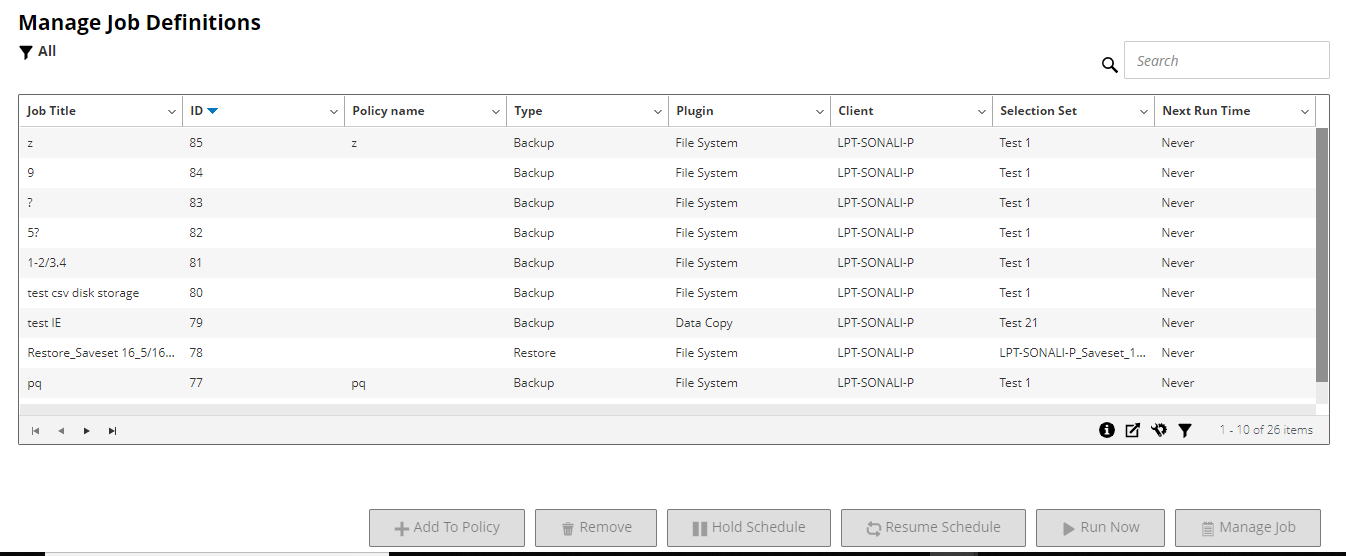Clearing job errors and warnings
|
1 |
In the Navigation pane, click Job Status. |
|
• |
|
• |
|
• |
Removing a job schedule
|
1 |
In the Navigation pane, click Job Status. |
|
2 |
In the list of jobs, select the job, and click Remove Schedule. |
Managing job definitions
This section includes the following topics:
Viewing job definitions
Job definitions are stored in the Scheduler Database. You can view the job definitions for all scheduled, saved, completed, and active jobs from the Manage Job Definitions page.
|
1 |
In the Navigation pane, click Manage Job Definitions. |
|
• |
Job Title: Name or title of the job. |
|
• |
Job ID: Job ID number (also shows the instance ID number and phase ID number). |
|
• |
Policy name: Name of the policy if the job belongs to a backup policy. |
|
• |
Type: Backup or restore. |
|
• |
Plugin: Name of the plug-in used to perform the job. |
|
• |
Client: Name of the NetVault Client for which the job was performed. |
|
• |
Selection Set: Backup or Restore Selection Set. |
|
• |
Next Run Time: Date and time when the next instance is scheduled to run. |
|
2 |
|
3 |
Optionally, use the Search option to filter the table data and quickly find entries that contain the specified string in any column values. You can also include wildcards (“?” or “*”) in the search filter string. |
|
• |
Job Details: This area shows the following information: job name, job ID, job type (backup or restore), and name of the client. |
|
• |
Configuration: This area lets you create, edit, and view the protection sets. It shows the selections, the plug-in options, schedule, source storage, target storage, and advanced options. |
|
• |
Recent Instances: This table lists the recent instances of the job. It shows the following information: Run time, duration, job size, instance ID, phase ID, and status (Succeeded, Failed, Aborted, and others). |

